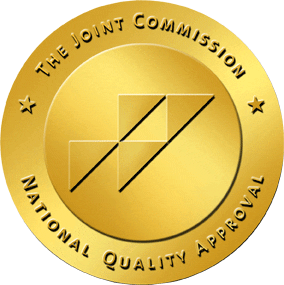In her article, Jennifer Moss highlights how burnout has been viewed as a problem that only the individual can solve through the use of self-help practices such as yoga, relaxation techniques, exercise, and more. However, Moss asserts that the responsibility should be on the organizations themselves to prevent burnout, revealing that ‘personal, band-aid solutions’ may be doing more harm than good. Therefore, if burnout is on the rise in healthcare workers, then organizational changes are necessary to protect their wellbeing in the long-term.
In this article, we have identified the ways in which healthcare organizations can help reduce the risk of burnout in their workforce.

Access to resources and treatment
Organizations – in the healthcare sector or not – should consider the benefits of providing mental well-being resources and access to treatment for their workers. For example, this could mean that each hospital provides a therapist solely for their workers. This would be a confidential and anonymous service that they have access to before, during, or after their work hours.
This kind of service would be crucial for healthcare workers, as 39% do not feel like they have received adequate emotional support. Additionally, almost 40% of U.S. physicians have no workplace support for grief and trauma. So, this is just one of the services that organizations can provide to reduce the risk of burnout in their workers.

Self-care check-ins
Self-care is crucial for good mental health. However, we don’t often know how to practice good self-care or what that even means. Therefore, organizations need to schedule self-care sessions and check-ins, which could consist of a supervisor leading a workshop on good self-care practices. To support this, organizations should implement staff training that trains their workers in stress reduction strategies. This could include yoga, deep breathing, and meditation.
Additionally, organizations can run monthly check-ins, driven by a team leader, to identify if members of their department are struggling in prioritizing their own wellbeing. Appropriate action to help that individual can then be taken.

Strong Leadership
Kathy Cox an author and associate professor in the School of Social Work at California State University claims that ‘prevention starts in the workplace.’ For this reason, great leadership must be instilled. Studies suggest that good leadership qualities in supervisors decrease burnout and instead increases job satisfaction.
Offer Performance-Independent Incentives
The incentives provided by organizations to their workers have a large influence on burnout and overworking. For example, productivity-based compensation can often lead to the individual overworking, which can then lead to an increase in burnout. Instead, it has been advised that performance-independent salary models or other rewards, such as holidays and greater schedule flexibility are offered to healthcare workers.

Provide Opportunities for Socialization
Peer support is a critical factor in work satisfaction for healthcare workers. In recent years, there has been a multitude of technological advances, which has caused more work to take place on computers. This new way of working means there is less interaction between co-workers and fewer opportunities for socialization. Therefore, workers have felt more isolated, leading to an increase in burnout.
However, one of the ways to overcome this is to provide comfortable lounges for workers to sit and socialize in. They may only use this space at lunch or on their breaks, but it will provide a sense of solidarity with their co-workers. It could even allow them to air their worries and stresses to their co-workers in a comfortable environment. Humans need socialization, so healthcare workers shouldn’t be neglected of this.
Evidence provided by ResearchGate demonstrates that encouraging solidarity reduces burnout. Research shows that when physicians participate in small group discussions for an hour every other week, they experience considerable reductions in depersonalization and emotional exhaustion. It is quite clear that the primary benefit of encouraging the socialization of workers is the reduction of stress and, therefore, the risk of burnout.

Offer suitable training
Training is important not just for the healthcare workers, but also for their supervisors. It’s vital for a supervisor to have empathy and know how to help those who are struggling with their mental or physical wellbeing. Therefore, training supervisors on how to create a genuine dialogue with their co-workers around the topics of mental health would be more constructive and productive. The results of these conversations should be the provision of resources, referral to a mental health professional, and/or follow-up meetings to monitor the worker’s progression.
As previously mentioned, training for workers can include: self-care tips, tips to manage stress, and useful resources that they can access at any time.

Final Thoughts
After a particularly gruelling couple of years, nurses and healthcare practitioners are still struggling under the weight of normal job tasks with the added pressures of the global pandemic. That is why now is the time to prioritize the health and mental wellbeing of healthcare staff.
Healthcare workers cannot tackle burnout alone, instead, they need support from the organizations they work for. Therefore, it is the responsibility of healthcare organizations to do their part in helping their workforce. The tips that we have provided in this article will be the first step in reducing the risk of burnout in their workforce.


